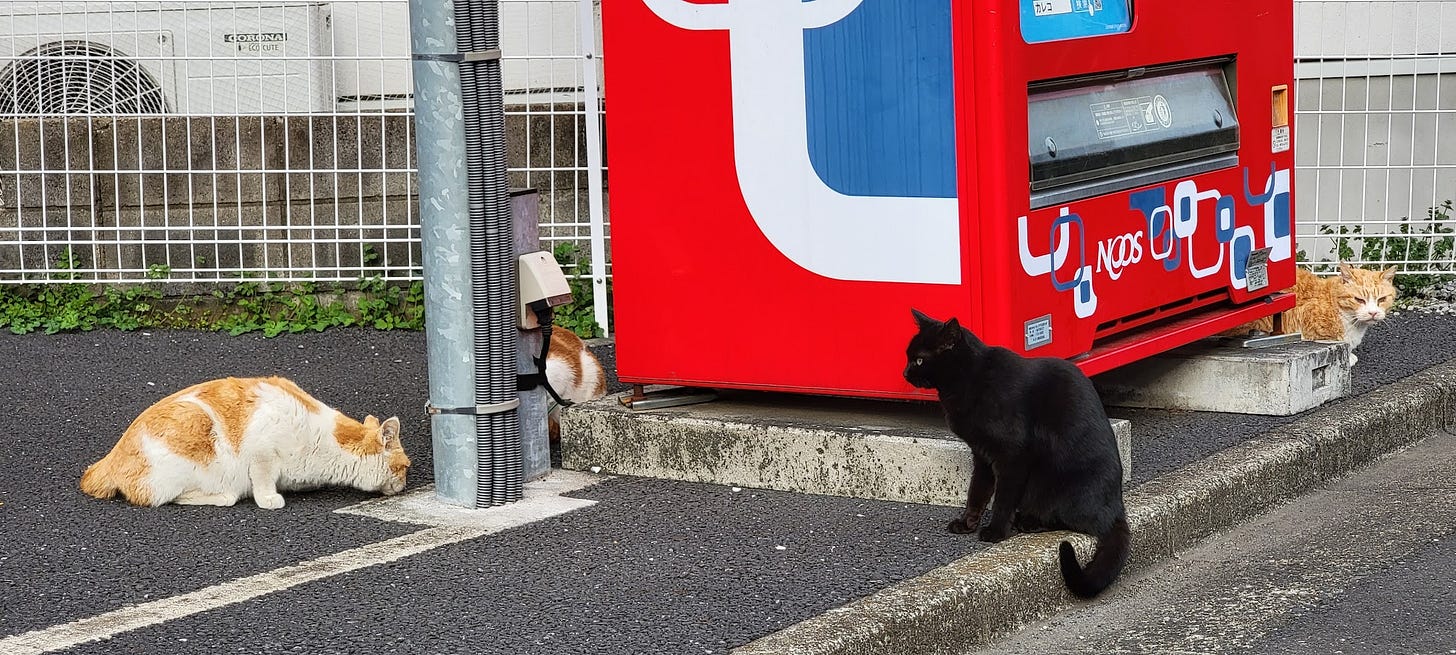Japan has a plan to connect every home and apartment to a vast sushi conveyor system by 2030.
Sushi conveyor restaurants, called kaitenzushi in Japanese, are popular and fun. But this national network will be unlike anything anyone has ever experienced.
This gigantic sushi transport system will cause significant demographic and economic changes in Japan. Consider: Who will take a two-hour train ride to a new sushi restaurant when you can have sushi delivered to your window with a tap of an app? Who will even go to a neighborhood sushi restaurant when sushi swiftly sails along the sky? Why would you eat anything besides sushi? It will put Uber Eats and DoorDash out of business.
This network of sushi conveyors will stretch 5.5 million kilometers, more than one-hundred-twenty times the length of Japan’s rail system. Kaitenzushi restaurant conveyors move at four centimeters a second to give patrons time to examine and pick up plates as it goes by, but sushi on the Japan Sushi Conveyor Service, JSCS, will speed along at 40 kilometers per hour (but slow down as it reaches its destination apartment or house.) It’s able to achieve those speeds using special gyroscopically-stabilized sushi rail cars.
The JSCS has begun a pilot test program in Atami, a coastal city one hundred kilometers south of Tokyo. The test program, which connects two apartment buildings and seventeen houses, has gone well so far, except for one problem, which you may have guessed: stray cats.
The conveyor isn’t enclosed because this would price the network in the realm of the impossible. In the Atami pilot, stray cats snatched seventeen percent of the sushi. Judging from the test videos, what limited the cats’ catch wasn’t the difficulty of stealing the sushi but how much the cats wanted to eat.
Even more troubling was that after a time, cats learned the test participants' sushi preferences and the times they liked to order. For example, if a customer often ordered tuna sushi at 7 p.m., a particular orange cat that likes tuna would hang out nearby, but another cat, a tabby who favors shrimp, was spotted waiting near a house where people frequently ordered shrimp.
Despite sometimes steep grades, stray cats can easily climb along the conveyors as if they were…cats.
After eating the sushi and knocking off the rice they weren’t interested in, many cats rode the sushi rail cars along the conveyor like an amusement park ride.
Despite these problems, the Japan Sushi Conveyor Service is continuing its plan for a nationwide rollout of the sushi conveyor system. I guess they can live with a seventeen percent stray cat snatch rate. But will it stay at only seventeen percent? Once strays in other countries hear about JSCS, they’ll travel to Japan, and Japan’s population of one million stray cats will burst into tens of millions. Why wouldn’t they all come to Japan? Korean cats, American cats, Argentine cats—Japan will be the place for all the planet’s strays.
I know that’s going to happen, just as I know that soon after the JSCS is complete, they’ll want to build some kind of protective enclosure around the conveyor. Would that even work? Do they understand how determined and capable cats are?
This five million kilometers of sushi temptation will be a wild ride.
I also publish a short story newsletter, Fiction by Bill Adler, and would be delighted if you subscribed.







"Despite sometimes steep grades, stray cats can easily climb along the conveyors as if they were…cats. " 😂
Wonderful, Bill!
I so enjoyed this. Thank you 💙🙏